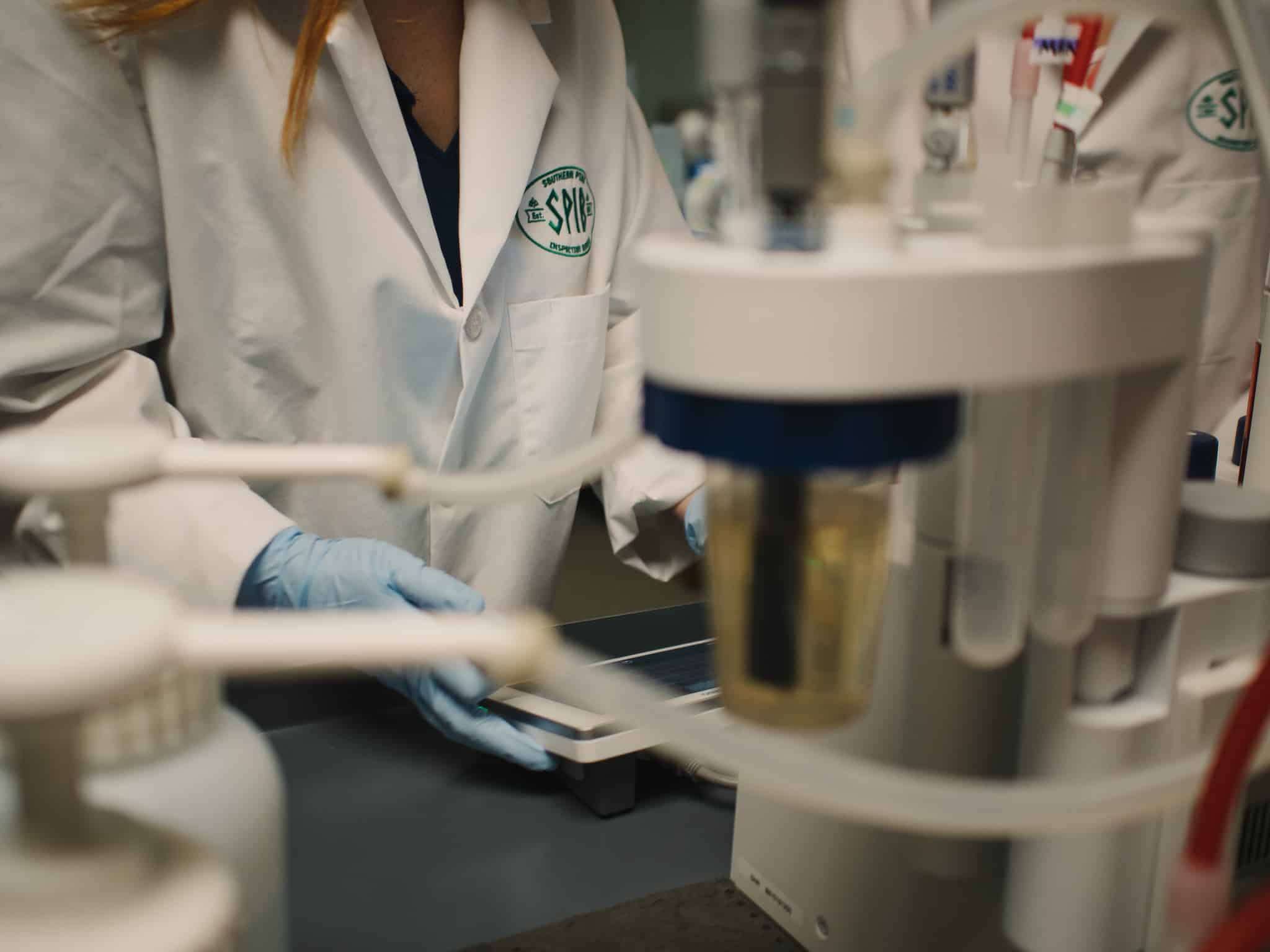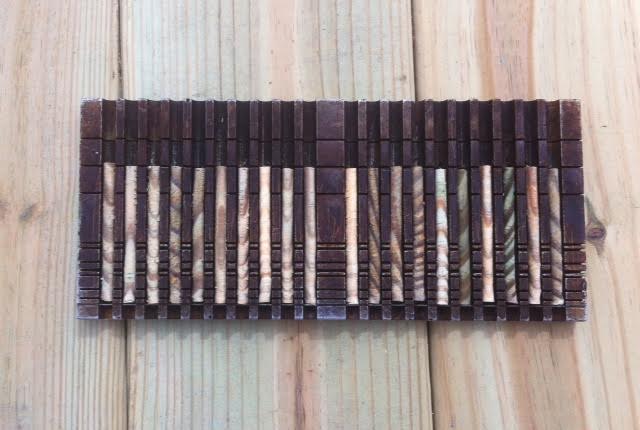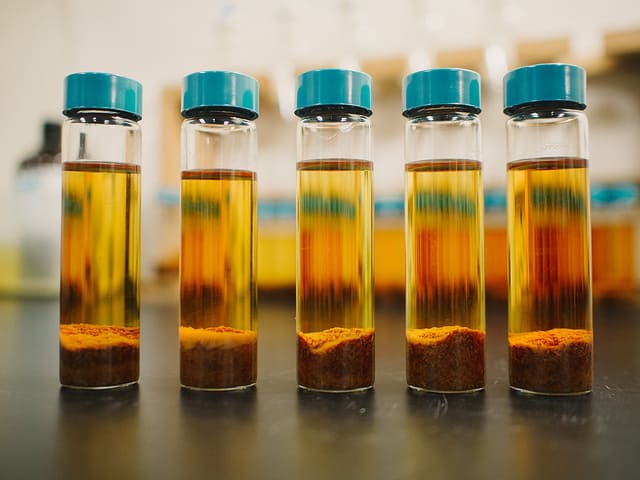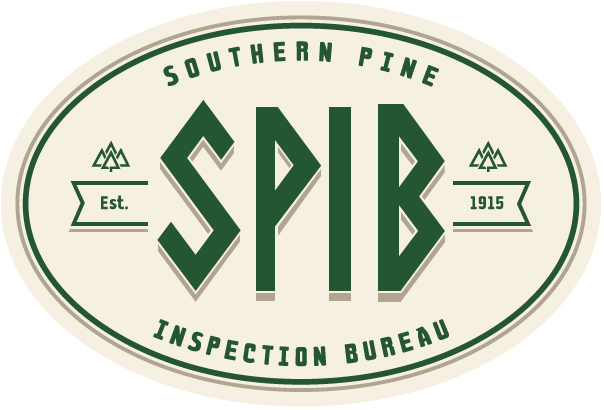
Tales of a Treated Wood Lab Tech: The Team Behind-the-Scenes
So, you’ve just purchased some pressure-treated wood for your spring garden project. You’re no rookie! You know how important it is to look at the tags on the end of the lumber to find all types of important information, including the treating company, preservative type, appropriate end-use, third-party inspection information, and even warranty details. But did you take a moment to wonder…what goes on behind-the-scenes before that piece of pressure-treated wood makes its way onto the store shelf? If the answer is yes, let’s grab a lab coat and take a closer look!
Our tale begins at the treating plant. Treated wood producers work hard every day, conducting an in-depth, standardized process of in-plant quality control (IQC), dedicated to providing the consumer with high-quality, sustainable products for a wide range of applications (including your spring garden project). Specialized analytical equipment is used to measure the proper preservative concentration before treatment. For each “charge” or batch of wood treated, core samples are taken throughout the charge to verify that the minimum preservative penetration has been met. A specified assay zone of these cores is then collected, dried, ground, homogenized, and analyzed as a composite sample to measure the preservative retention. Industry-approved standards require that these composite assays meet minimum preservative retention suitable for specified service conditions. Industry standards further require a certain number of these IQC samples to be analyzed and compared to an approved laboratory’s overall retention analysis to monitor the continued accuracy of plant results.

To provide an additional layer of confidence to a plant’s quality system, accredited third-party inspection agencies, such as the Southern Pine Inspection Bureau (SPIB) and its western division, Western Wood Services (WWS), work in tandem with subscribing treated wood producers to approve and independently audit their IQC programs based on industry standards. Unannounced inspections are conducted by SPIB each month to evaluate in-plant quality control requirements and to sample a prescribed number of charges. These third-party audit samples are evaluated for preservative penetration on-site by SPIB inspectors and are then submitted to the SPIB lab team for retention analysis.
These verification and audit processes take your journey a bit further behind the scenes as we follow these inspection samples to our laboratory at SPIB. Using analytical methods approved by the American Wood Protection Association (AWPA), our SPIB team of lab geeks evaluates thousands of in-plant and third-party audit samples for retention analysis every year.
Most people outside of the laboratory setting may be unaware of the high-level skills required or the methodical processes involved in performing these types of tests. Luckily for you, we’re here to tell you more about how it’s done.
Samples that have been treated with preservatives containing metallic components are initially analyzed by X-ray analysis. When samples are exposed to X-rays, the energy causes changes to occur within the sample’s atoms. The resulting energy produced from those atomic changes can be measured by a detector to determine the amount of preservative in the sample.

Various preservative samples require additional test methods that are more complex as the chemical components cannot be measured directly and must be extracted from the wood sample. This extraction process requires a solution (usually made of alcohol) to be added to a measured amount of sample. Then, the mixture is sonicated for several hours to release the chemicals from the sawdust.

Wood treated with borate or quaternary compounds is analyzed through a process called titration. Titration is the method of determining an unknown concentration in a solution by adding a known concentrate of ‘titrant’ in carefully measured amounts until a reaction occurs. The reaction is determined by color or electrical change within the sample. You probably remember performing titrations in your high school chemistry class.
Some preservative components or co-biocides, such as Azoles, can only be identified and measured using Gas Chromatography (GC) analysis. The GC process uses a tiny portion of the filtered extract that is pulled up into a syringe and injected into the instrument. As the sample travels through a column, each component reaches the end of the column at different times and moves past a detector. The detector can measure these components and record their output as peaks in a chromatogram. Other non-metallic, organic preservative systems contain components that must be analyzed by a similar test method known as High-Performance Liquid Chromatography (a.k.a. High-Pressure Liquid Chromatography or HPLC).
Once all the assays are completed for each component in a sample, the results are combined, and the final retention result is calculated! Sounds like a lot of work, doesn’t it? But the process doesn’t stop here. While this information is certainly vital to evaluate plant performance for each inspection as required by the AWPA, it also provides invaluable cumulative information to identify trends that assist the plant in maintaining product conformance and making any adjustments they deem necessary to consistently meet their treatment goals!
Thank you for taking this inside look with us. Now that you have your plans, your plants, and your behind-the-scenes appreciation for all the work that goes into the quality of your treated wood products, you can take off your lab coat and put on your yard-working gloves! The SPIB Lab Team hopes your garden looks great this year!
